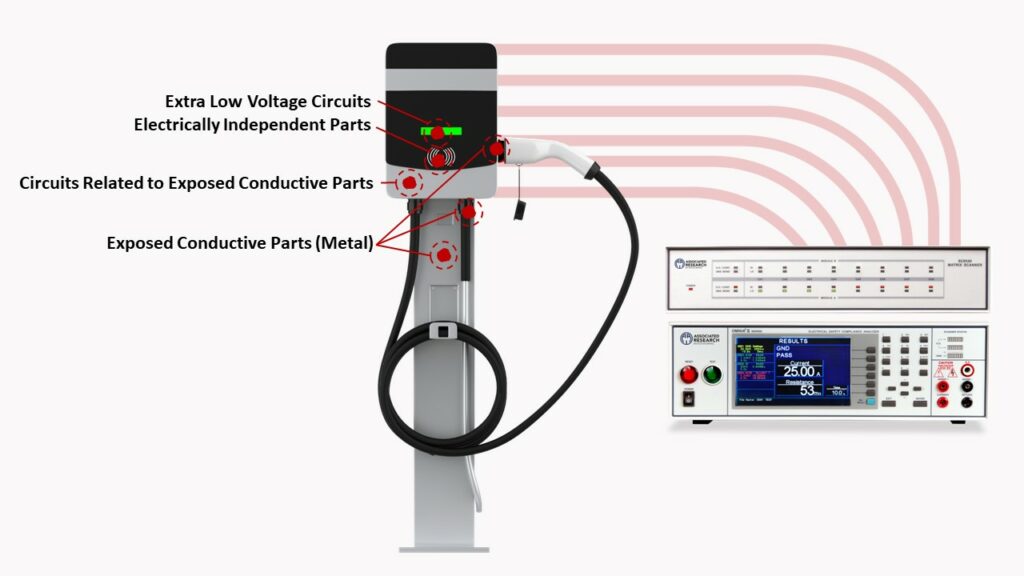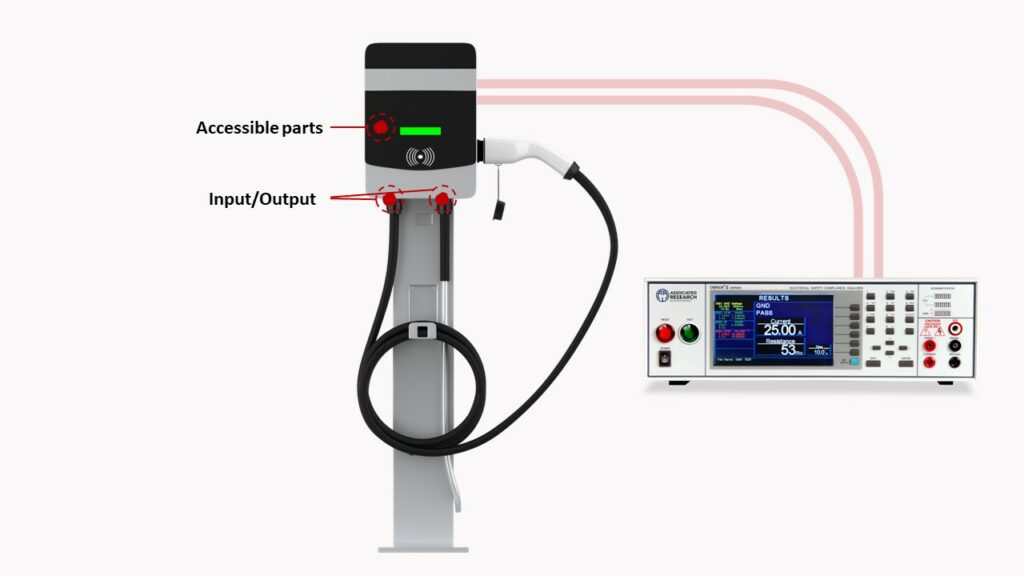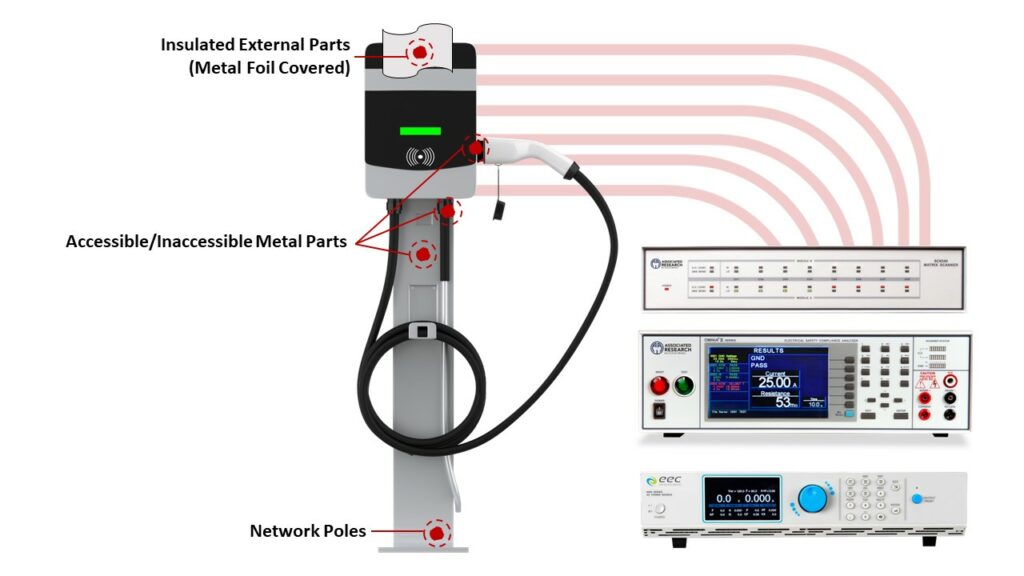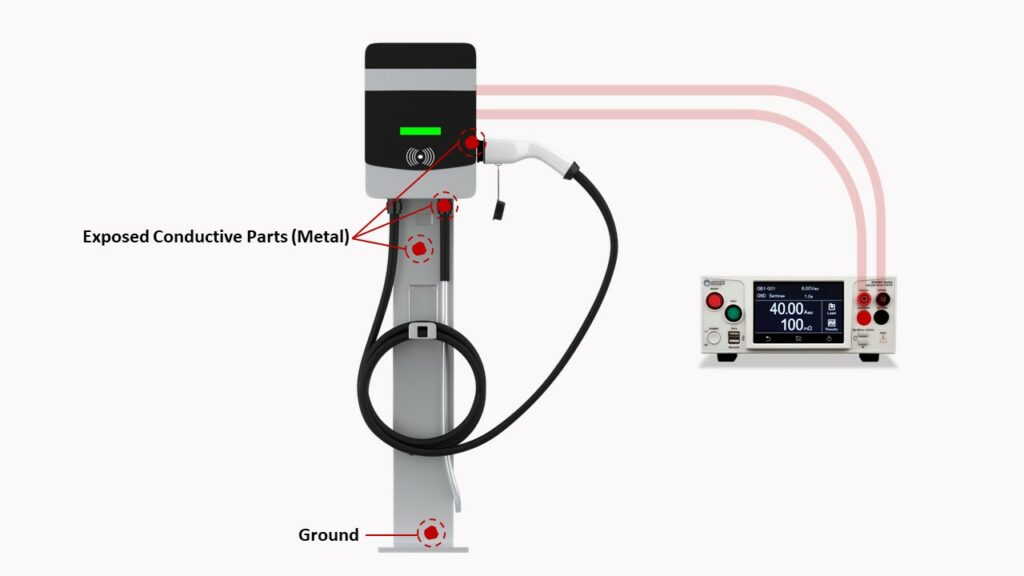News
IEC 61851 Testing Insight Ensures EV Charger Safety
The global electric vehicle (EV) market continues to thrive. At the recent Tokyo Auto Show, automakers showcased their advanced technical innovations, with EVs taking the center stage. Among them, Toyota, known for its success in hybrids, has shifted its focus to Battery EVs in an effort to catch up with competitors like Tesla and BYD. Toyota's executives openly acknowledged that Japan's leading automaker had fallen behind rivals in EV development, such as Tesla in the U.S. and China's BYD Auto. To bridge this gap, they have announced the adoption of Tesla's North American Charging Standard (NACS). This strategic move aims to address concerns related to availability, convenience, and charging speed that potential customers may have. Furthermore, major automakers, like Ford and Mercedes-Benz, are standardizing charging protocols to offer rapid charging capabilities to their EV users. This collaborative effort significantly accelerates the expansion of EV adoption and the proliferation of charging stations. Consequently, an increasing number of EV charging station manufacturers turn to us for efficient testing solutions to ensure the safety of their charging stations. To understand what makes an electrically safe EV charging station, please read our comprehensive article. We delve into the world of EV charging, explore essential electrical safety standards like IEC 61851, and provide insights into their respective testing requirements and solutions.
Understanding Different EV Charging Modes
Before we explore the safety testing requirements for manufacturing, let's clarify the various types of charging stations available, their distinctions, and whether they have safety mechanisms to prevent electric shocks. According to IEC 61851, EV charging modes fall into four categories based on their power connection and shock protection. Mode 1 involves plugging an EV into a standard household socket without shock protection, but it's often banned due to safety concerns. Mode 2 is similar to Mode 1 but includes a cable with built-in protection against electric shock. Mode 3 comprises an AC charging station, either wall-mounted or public, with shock protection and a permanent power connection. Lastly, Mode 4, also known as a supercharger, provides DC power to the EV and is commonly found in public charging stations with a permanent electrical grid connection.

Key Electrical Safety Tests for EV Charging Stations
Electrical safety testing plays a pivotal role in ensuring the safety and quality of charging stations before they are used by consumers. A series of essential electrical safety tests is conducted, which includes Hipot, Ground Bond, Insulation Resistance, and Leakage Current tests. Notably, charging stations are classified into two categories: Class 1, which features basic insulation, and Class 2 chargers, equipped with reinforced insulation.
The Hipot test involves applying up to 4000V AC for 60 second to specific testing points on the charging station without experiencing any breakdown. Here are the specific testing details: Class 1 chargers require 2000V AC for testing points related to circuits with exposed conductive parts, exposed conductive parts, and electrically independent parts, while Class 2 chargers necessitate 4000V AC. Additionally, for both Class 1 and Class 2 chargers, a 4000V AC test is applied between the power circuit and extra-low voltage circuits.

Insulation resistance test is applying 500V DC to the testing points between connected inputs/outputs and the accessible parts, with the measured resistance needing to exceed 1M ohms for Class I charging stations, or 7M ohms for Class II charging stations.

Leakage current test determines the current between AC supply network poles and the accessible metal parts connected together and insulated external parts with a metal foil covering. For Class 1, the leakage current should be less than 3.5mA, and for Class II, it should be less than 0.25mA. Additionally, Class II should also measure the leakage current between network poles and the metal inaccessible part and between connected accessible and inaccessible metal parts and insulated external parts with covering a metal foil. These values should be less than 3.5mA and 0.5mA, respectively.

Ground bond test is only required for Class I charging stations by checking the electrical continuity between exposed conductive parts and the earth circuit. It entails applying a DC current of 16 A with a no-load voltage not exceeding 12 V between any exposed conductive part and the charging station's earthing terminal. The resistance between these two points should not exceed 0.1 Ω.

Comprehensive One-Stop Testing Solutions
Ensuring the highest level of safety for these chargers involves dealing with various complex aspects, particularly the Hipot test and leakage current test, which must be performed at multiple points. This complexity makes the efficient execution of necessary electrical safety tests quite challenging. To address these challenges, many manufacturers in the EV charging industry have opted a comprehensive, all-in-one solution. They've chosen for the OMNIA®II Multi-Function Electrical Safety Tester, bundled with the SC 6540 Multiplexers and WithStand®. OMNIA®II integrated AC/DC withstand (ACW/DCW), insulation resistance, leakage current and more in a tester. Bundle with Multiplexers to create a multi-testing hub. Through this integrated solution, operators can program testing sequences and take advantage of direct barcode connections, enabling them to swiftly associate products with pre-programmed test files. This simplified testing process eliminates the need to switch testing leads for each testing point. This optimization significantly enhances efficiency and reduces the likelihood of connection errors. For Class 1 products that require a DC ground bond test, you can easily add a HYAMP® Ground Bond Tester into the solution. It combines AC and DC testing capabilities within a compact design, offering a maximum 40A current measurement capacity and high-precision performance.
With over 85 years of industrial experience, Ikonix has successfully helped many EV manufacturing partners in overcoming their electrical safety testing challenges. If you have any questions about electrical safety testing in the EV industry, please don't hesitate to contact us today.
The attached file



